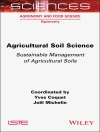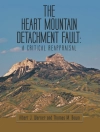The introduction of contaminants, due to rapid urbanisation and anthropogenic activities, into the environment causes unsteadiness, distress to the physico-chemical systems including living organisms, which possibly is threatening the dynamics of nature as well as the soil biology by producing certain xenobiotics. Hence, there is an immediate global demand for the diminution of such contaminants and xenobiotics which can otherwise adversely affect the living organisms. Some toxic xenobiotics include synthetic organochlorides such as polycyclic aromatic hydrocarbons (PAHs), and some fractions of crude oil and coal.
The advancements in microbiology and biotechnology has lead to the launch of microbial biotechnology as a separate area of research and contributed dramatically to the development of the areas like agriculture, environment, biopharmaceutics, fermented foods, etc. The evolution of new metabolic pathways from natural metabolic cycles has enabled the microorganisms to degrade almost all different complex and resistant xenobiotics found on Earth. Hence, microbes stand an imperative, efficient, green and economical alternative to conventional treatment technologies.
This book comprises chapters dealing with various bioremediation strategies with the help of different groups of microorganisms along with detailed graphical/ diagrammatical representations. It also focuses on the use of microbial biotechnology and highlights the recent developments in microbial biotechnology in the area of agriculture and environment. Furthermore, it contains a detailed comprehensive account for the microbial treatment technologies from unsustainable to sustainable which includes chapters prepared by professionals, several researchers, scientists, graduate students and postdoctoral fellows across the world with expertise in environmental microbiology, biotechnology, bioremediation, and environmental engineering. The research presented also highlights some of the significantly important microbial species involved in remediation, the physiology, biochemistry and the mechanisms of remediation by various microbes, and suggestions for future improvement of bioremediation technology.
This book would serve as a quick reference book for graduate and postgraduate students pursuing their study in any branch of life sciences, microbiology, health sciences and environmental biotechnology as well as researchers and scientists working in laboratories and industries involved in research related to microbiology, environmental biotechnology and allied researches.Inhoudsopgave
Part I: Fundamental Aspects and Microbiome.- Chapter 1. Bioremediation on the Crossroads of Technology for Environmental Clean-up: An Overview(Rawhat Un Nisa).- Chapter 2. Dynamics of Soil Microbiome and its Role in Sustainable Agriculture(Debapriya Maitra).- Chapter 3. Soil Bacteria and Nematodes for Bioremediation and Amelioration of Polluted Soil(Gunjan Khandelwal).- Chapter 4. Phytochelatins and their Application in Bioremediation(Isha Sharma).- Chapter 5. Efficacy of Biosurfactants in Bioremediation Process(Muthusamy Sanjivkumar).- Part II: Microalgae and Fungi.- Chapter 6. Arbuscular Mycorrhizal Fungi (AMF) for Sustainable Soil and Plant Health(Jean Yves Uwamungu).- Chapter 7. Arbuscular Mycorrhizal Fungi in Phytoremediation(Najla Bentrad).- Chapter 8. Bioremediation of Contaminated Soil by Microalgae and its Importance in Biofuel Production(Harish Kumar Seenivasan).- Chapter 9. Cyanobacteria for Bioremediation of Contaminated Soil(Uzma Sultana).- Chapter 10. Role of Microalgae as Biofertilizer for Sustainable Plant and Soil Health(Joseph Oduor Odongo).- Chapter 11. Soil Bioremediation Approaches Based on the Use of Fungal Enzymes(Anoop Kumar Devedee).- Part III: Contaminated Sites and Xenobiotics.- Chapter 12. Microbial Inoculants: An Invasive Approach for the Bioremediation of Soil Contaminated with Heavy Metals(Priyanka Bumbra).- Chapter 13. Microalgae – A Promising Tool for Heavy Metal Remediation(Shahid Mahboob).- Chapter 14. Role of Rhizobacteria in Phytoremediation of Metal-impacted Sites(Dwaipayan Sinha).- Chapter 15. Chromium Pollution and Its Bioremediation: An Overview(Kirandeep Kaur).- Chapter 16. Bioremediation of Antibiotics as a Pollutant in Soil(Ashmita Gupta).- Chapter 17. Microbial Bioremediation of Polythene and Plastics(Jean Yves Uwamungu).- Part IV: Recent Trends and Approaches.- Chapter 18. Carbon Sequestration: An Approach to Sustainable Environment(Jasra Anjum).- Chapter 19. Biochar as an Emerging Amendment for Remediation of Heavy Metals Contaminated Soil(Sakshi Verma).- Chapter 20. Nano-bioremediation for the Reclamation and Treatment of Contaminated Sites(Madhavi Konni).- Chapter 21. Biotechnological Interventions for Pesticide Remediation and Soil Health Reclamation(Vishal Sharma).- Chapter 22. Transgenic Approaches for Improving Phytoremediation Potential(Gargee Mohanty).
Over de auteur
Dr. Malik received B.Sc. (2008) Science from the University of Kashmir, Srinagar, J&K; M.Sc. (2010) in Zoology from Barkatullah University, Bhopal, Madhya Pradesh; and Ph D (2015) in Zoology from the same university. He completed his B.Ed program in 2017 from the University of Kashmir, Srinagar, J&K. He started his career as Lecturer in the School Education Department, Govt. of J&K for 2 years. Dr. Malik is now working as a Lecturer in the Department of Zoology, Govt. Degree College, Bijbehara, Kashmir (J&K) and actively involved in teaching and research activities. He has more than 8 years of research experience. His areas of interest are ecology, soil macrofauna, wildlife biology, conservation biology etc. Dr. Malik has published more than 20 research papers in various national and international peer-reviewed journals. He has published 19 books, 31 book chapters and more than 10 popular editorial articles with various publishers like Springer Nature, Elsevier Inc., Taylor and Francis Group and IGI Global. Dr. Malik is acting as the Editor-in-Chief of Inventum Biologicum (An International Journal of Biological Research) published by World Biologica, India. He is also serving as editor and reviewer of several journals with a reasonable repute. He has participated in several State, National, and International conferences, seminars, workshops, and symposia and more than 20 conference papers are to his credit. He is the life member of SBBS (Society for Bioinformatics and Biological Sciences) with membership id LMJ-243. Readers may contact him at [email protected], or [email protected]












